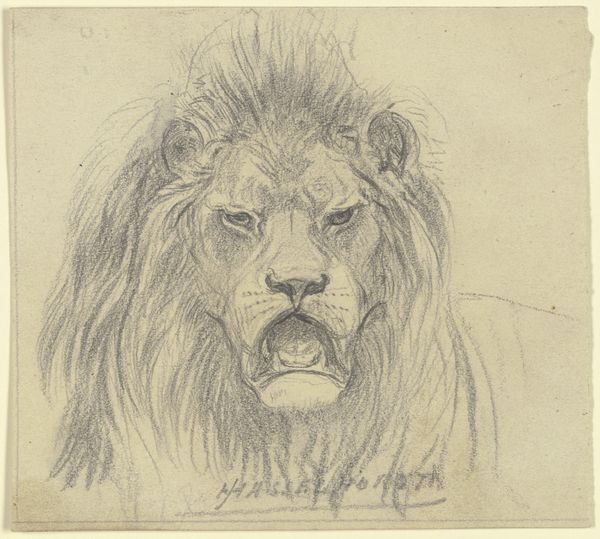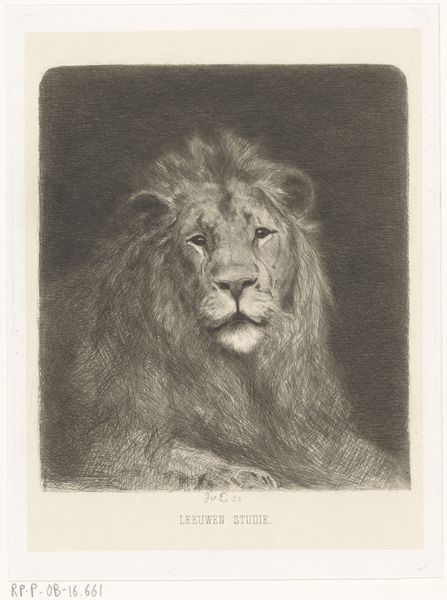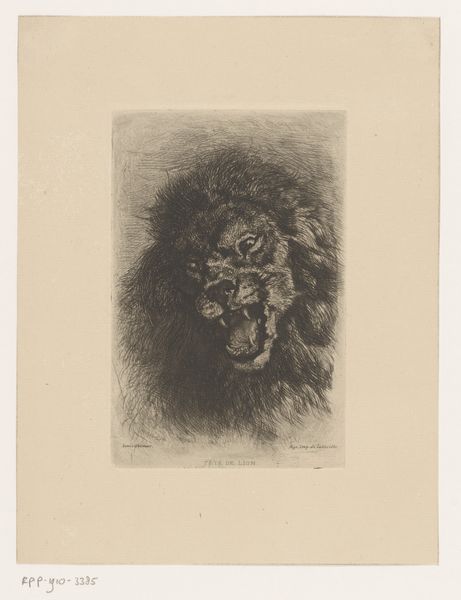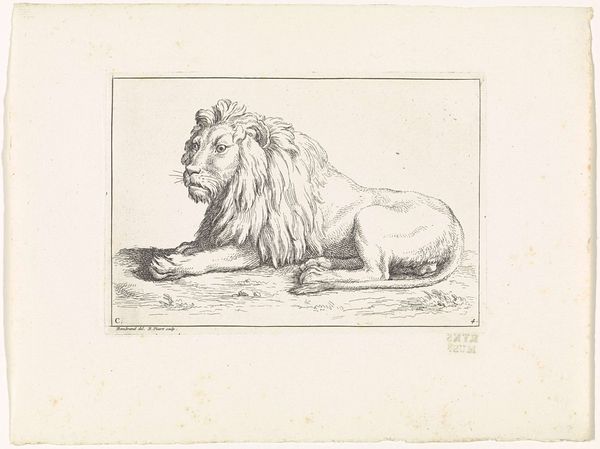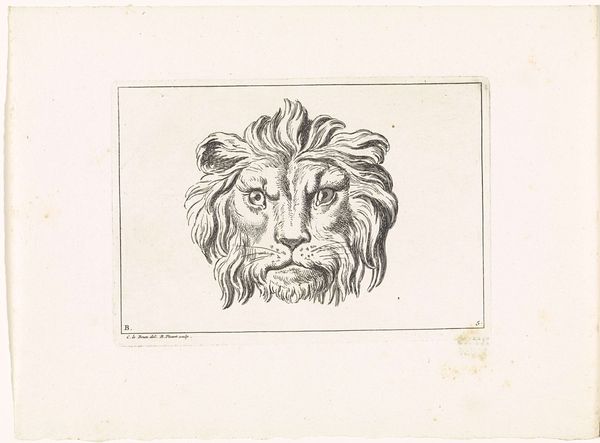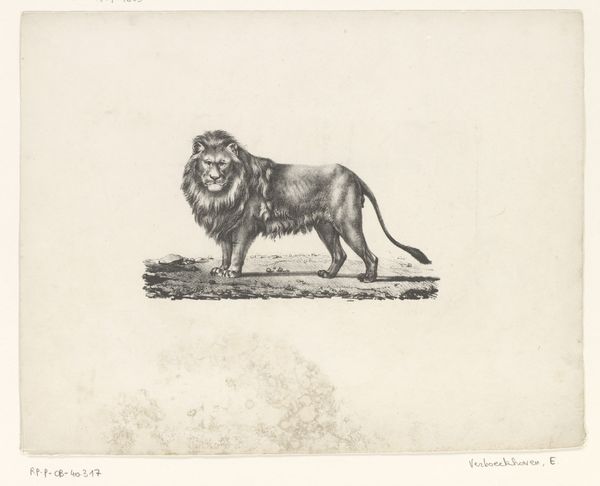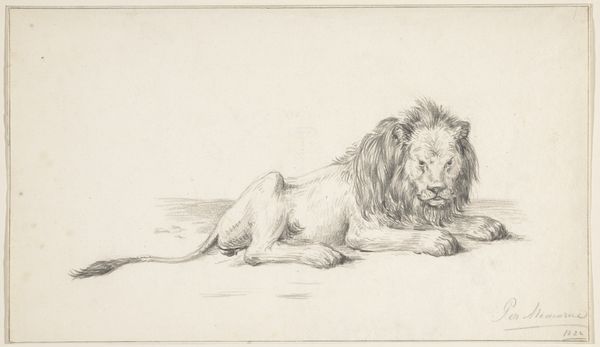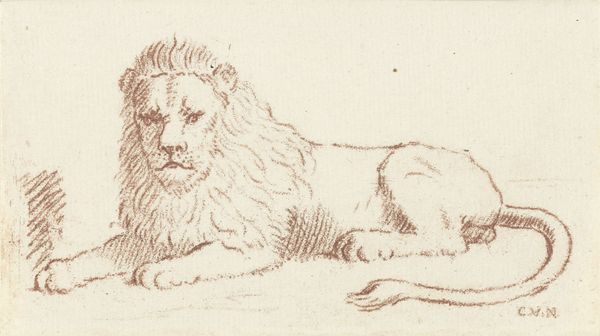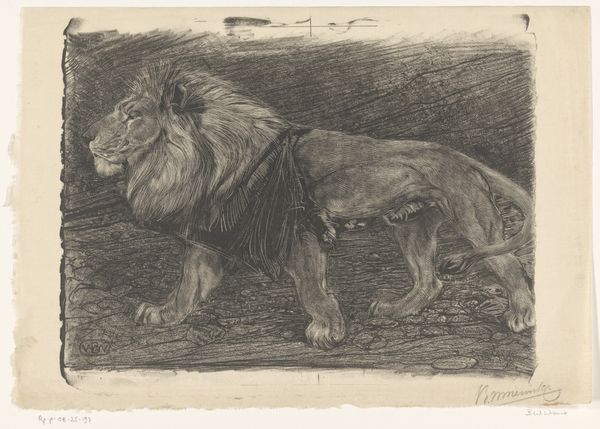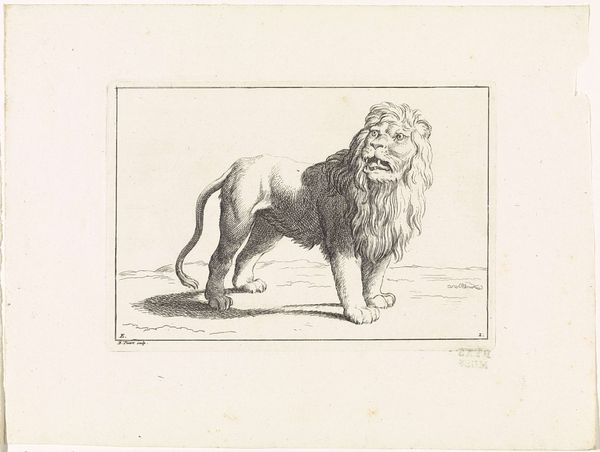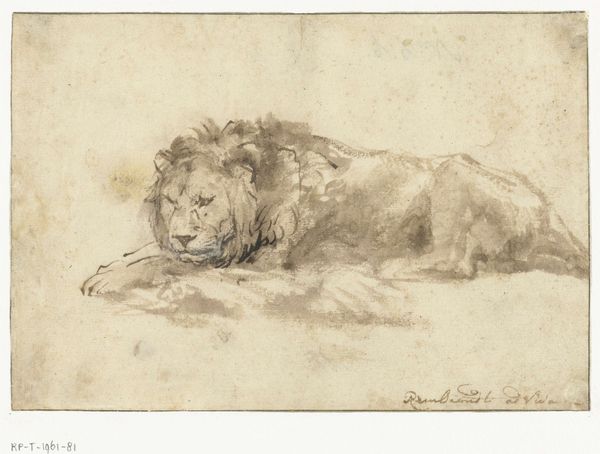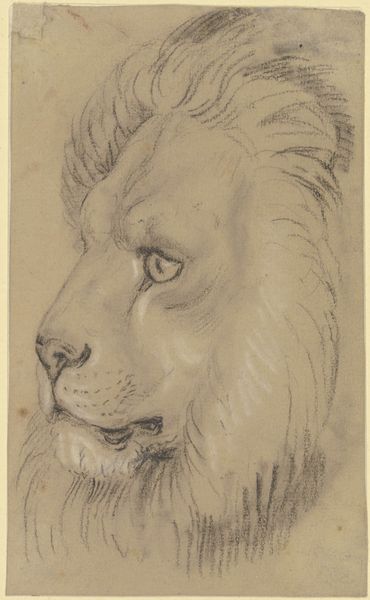
drawing, pencil, graphite
#
portrait
#
pencil drawn
#
drawing
#
light pencil work
#
pencil sketch
#
old engraving style
#
personal sketchbook
#
pencil drawing
#
pen-ink sketch
#
pencil
#
graphite
#
sketchbook drawing
#
pencil work
#
sketchbook art
#
realism
Dimensions: height 192 mm, width 147 mm
Copyright: Rijks Museum: Open Domain
Curator: So, here we have "Leeuwenkop," or "Lion Head," a drawing in graphite and pencil by Louis Ghémar, likely created sometime between 1830 and 1873. What are your first thoughts? Editor: Grrr! Seriously, that's the vibe I'm getting. Intense, raw, like the artist caught him right before a roar. It's captivating, yet…a little scary? You know? Curator: It's a striking image, and indeed the open mouth, bared teeth, and intense gaze create a sense of immediate threat. One can look at it through a lens of colonial power dynamics, how the lion as symbol, was historically used to convey European dominance over nature and "savage" lands. Editor: Huh. I see what you're saying. It is like a power play sketched onto paper. Though honestly, it feels more like the lion's pissed off about being sketched, about *being* a symbol, trapped in someone's sketchbook. Curator: That resistance, real or perceived, does add another layer to the piece. Ghémar’s realism places this lion very much in the natural world; not a heraldic emblem but a creature responding to his surroundings. What might have that looked like at this moment? Editor: Right? Imagine being Ghémar for a moment: the angle of the light, the smells of the air, the sound this big cat makes—all funneling through your hand as you try to capture… not just *lion*, but *this* lion, *now*. That’s intense, makes my hand ache just thinking about it. Curator: Indeed. Considering the nuances of perspective and intent allows us to read between the lines of imperial iconography, to engage with an intersectional critique of how the natural world, specifically animal life, was positioned and commodified by European imperial ambitions. Editor: Okay, my brain just did a backflip. You make it sound so… important. I just think he drew a really great, ticked-off lion. And maybe, in its own way, that’s powerful, right? To just let it be. Curator: Perhaps. Although I think exploring the potential symbolism enhances, rather than detracts, from our understanding of art’s socio-political impact, even if the lion is "just being". Editor: Okay, I'm going to mull on that. Either way, I wouldn't want to meet this lion in a dark alley! Thanks for shedding some light, though, as always. Curator: My pleasure.
Comments
No comments
Be the first to comment and join the conversation on the ultimate creative platform.

